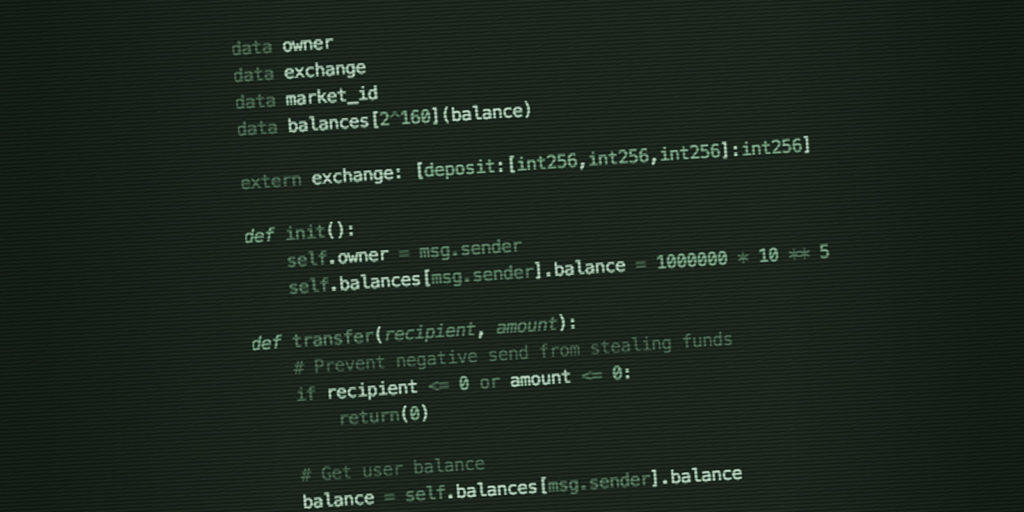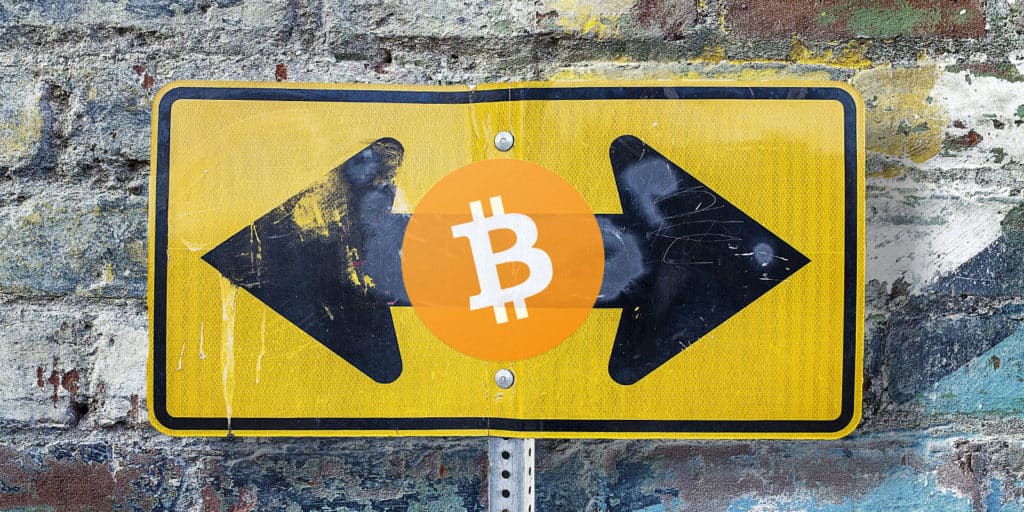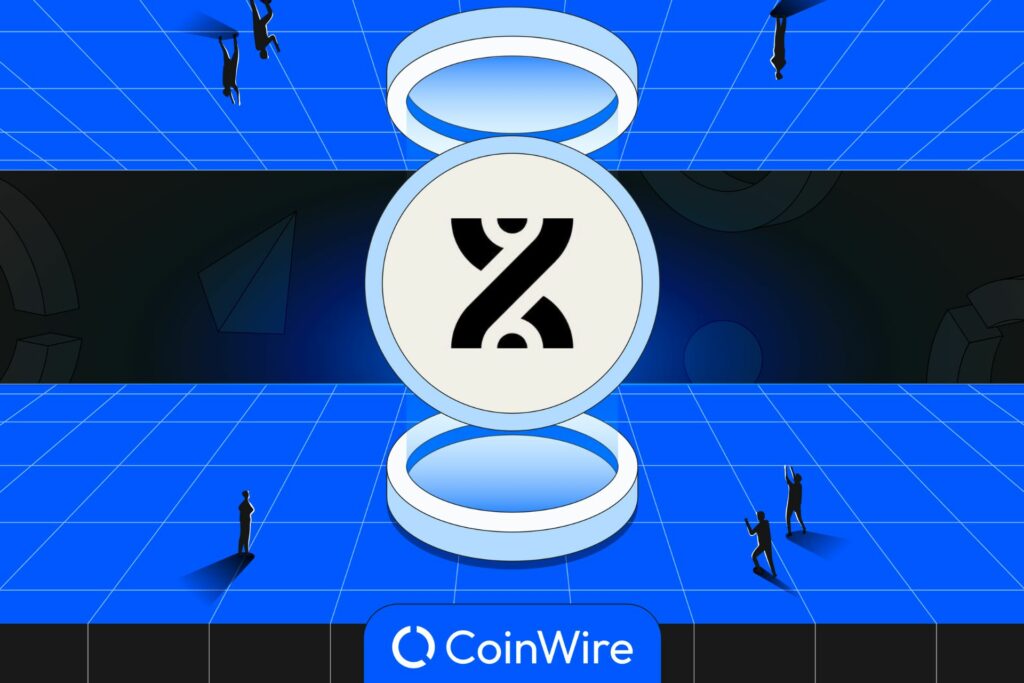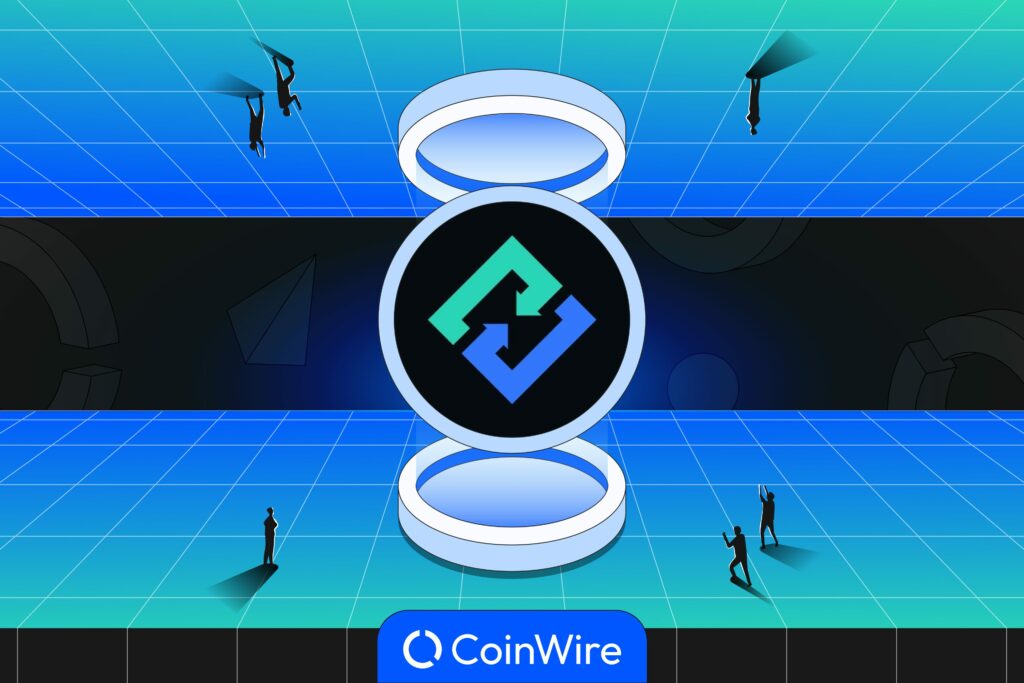Over time, it’s become clear that as innovative and significant as Bitcoin is, the blockchain is the bigger technological development. Learning about what it is and how it works will help you to better understand cryptocurrency, and also gain an appreciation for how numerous other entities and industries could use the technology.
The Basic Definition of the Blockchain
According to Investopedia, a basic definition of the blockchain is that it’s a decentralized public ledger where Bitcoin transactions are confirmed and recorded. This is the best way to describe it concisely, and it more or less touches on all the key points. However, it can still be at least somewhat confusing if you aren’t familiar with this sort of technology heading in.
One helpful way to imagine it without the tech terms and obscurity is to think of it like a universal Google Doc of sorts. Imagine that every time anybody made a purchase with Bitcoin, the details of that purchase were verified by a whole community and then recorded on this universal Google Doc. Then imagine that once recorded, these details could not be edited again. The blockchain is more complicated than that, but this example at least illustrates the general concept in a way that’s easy to understand.
Public and Anonymous
Two of the biggest benefits of the blockchain’s existence are that it allows Bitcoin transactions to be public and anonymous. The fact that transactions are public is all about transparency and protection against scam activities. Without the blockchain, it would theoretically be possible for an individual to at least attempt to use the same Bitcoin to pay for multiple transactions. It would also be possible for people to dispute transactions they’ve already agreed to. However, with all transactions being displayed publicly in the blockchain, these issues are avoided.
Public transactions should not be confused with revealing the identities of the people behind those transactions. This is another thing that Bitcoin users tend to love about the blockchain. When we say that transactions are transparent, we mean that everyone can see the amount of Bitcoin that changed hands, as well as the public addresses on either end of the exchange. However, your actual identity remains completely anonymous when you send or receive Bitcoin. Nothing about the process will reveal personal information beyond the public address of your Bitcoin (which is essentially meaningless without the private keys that you alone hold).
Related Post: Permissioned vs Permissionless Blockchains: Which Is Better in 2024?
Incorruptible
This is another key aspect of the blockchain specifically as it relates to the fact that all transactions are publicly recorded. You might wonder if this kind of transparency ultimately matters if it’s possible for publicly recorded data to be altered. However, it is believed that this is very nearly impossible.
To begin with, once data is made available on the blockchain, it will be noticeable if it is altered. Also, an individual transaction cannot be changed by a hacker without that hacker gaining broader access to the blockchain. It’s believed that the amount of computing power required for this kind of activity is prohibitive, and thus we can say with a high degree of certainty that the blockchain is essentially incorruptible.
How “Blocks” Work
The actual structure of the blockchain is one of the things that many people don’t fully understand. This is mostly because the technology’s functionality and promise simply generate more attention. The reality is that the structure is fairly straightforward. You need only to understand what elements are required to comprise a “block” of transactions or information.

First and foremost, a block contains a reference to the previous block. Because these are basically clusters of data meant to be “chained” together one after the other, it’s essential that a sequence is maintained. So a new block begins more or less by acknowledging the one that came immediately before it.
Next comes the real meat of the block, which is a list of included transactions. These are the bits that will ultimately become most interesting to the relevant public once the block becomes part of the blockchain, in that they help to comprise the “universal ledger” referenced previously. There is no set number of transactions that need to be summarized in a given block, though the average tends to be between 1,500 and 2,000, with some variance.
Those first two features—a reference to the previous block and records of included transactions—can be compiled automatically. It’s the third feature that really makes the concept unique and useful. This is the “proof of work” that reveals and confirms the mathematical process that went into confirming the transactions and compiling the block. This kind of process is conducted by Bitcoin “miners” via high-powered computers, and the proof of work ensures its legitimacy.
Finally, an individual block also contains a timestamp upon its completion. At this point, the block is “hashed,” which is basically another way of saying it is encrypted and added to the blockchain. This too speaks to the idea of the blockchain is incorruptible. A hashed block added to the blockchain is exceedingly difficult to alter or erase, despite the fact that the transactions themselves remain visible to the blockchain community.
Where The Blockchain Exists
Back in the basic definition, we mentioned that the blockchain is a decentralized public ledger. That aspect of the description speaks to where and how the blockchain is actually hosted. The blockchain is easily accessible by all because it can be viewed online (at blockchain.info). However, it’s actually hosted by a giant network of “nodes” (which for all intents and purposes are just computers).
In a centralized system, there would be one such “node” at the center of the entire network. It would control the blockchain at a single point, distributing visibility elsewhere. In the decentralized system, however, each miner or mining group—those who confirm transactions and add blocks to the blockchain—basically has a copy of the blockchain itself. They’re working independently on strengthening and adding to the same project. Here again, the idea of a universal document is a helpful comparison. Much like such a cloud-hosted document can be edited by anyone with permission to edit, the blockchain is updated by an entire network of miners. They work via the “nodes” that comprise the decentralized network.
Benefit Of Decentralization
On the surface, the idea of decentralization might seem most beneficial in that it allows so many people and groups to contribute to the blockchain at once. However, the true benefit speaks again to the nearly incorruptible nature of the blockchain. As with any type of stored data, a single server or a centralized network is far easier to sabotage, hack, or even destroy physically. A decentralized network, however, means that the blockchain exists in many different places at once. Should one node be corrupted in any fashion, the mere existence of the other nodes will ensure that the damage is contained and the system continues to exist.
For purposes of understanding, you might think of it in relation to how you store your own data. A local hard drive can be damaged or corrupted fairly easily; cloud storage, however, takes advantage of external servers separate from your local storage, and yet houses the same data. This is not a precise or exact analogy, but it speaks to the general idea of the benefits of decentralized hosting for security and continuity.
The Blockchain’s Uses Beyond Bitcoin
To this point, we have discussed the blockchain purely with regard to Bitcoin. This is why it was created, and to this point, Bitcoin remains the main use for the blockchain. In many respects, it’s an ideal foundation for the growth of cryptocurrency, and without it, Bitcoin would not be as valuable or influential as it is today. However, you will come across people claiming that the blockchain itself is actually a bigger breakthrough than Bitcoin, and this is because there are significant implications and uses beyond cryptocurrency.
Some have even gone so far as to refer to the blockchain as a new form of the internet. This is perhaps a little bit of a leap, but we can certainly say that the blockchain has introduced a new means of sharing and recording information.
Here are just a few of the ways that people envision the technology being used:
- Smart Contracts – The potential for so-called smart contracts is already being realized, with the Ethereum blockchain (a Bitcoin competitor) leading the way. The idea is that conditional data can be entered into the blockchain, with a sort of cause-and-effect code built in. So for instance, it could be recorded that a client pays a given amount of money to a company upon the meeting of a prearranged goal or milestone. This could theoretically resolve any and all related contract disputes before they begin.
- Property Titles – Anyone who has ever been involved in any sort of property dispute will understand the appeal of having ownership details permanently and irreversibly recorded in a public ledger. This is an idea that several countries have already begun to experiment with, and which could represent the future of property ownership and exchange.
- Elections – The blockchain has the ability to turn elections into fully transparent events that the public itself could verify. Particularly now, in an era in which there is a great deal of uncertainty and suspicion toward government institutions in much of the world, the idea of transparent elections could conceivably restore a degree of trust between citizens and institutions.
- Ordinary Banking – It should also be considered that ordinary financial institutions may imitate the blockchain in the interest of making their own practices more transparent. There are examples around the world of individual banks adopting private blockchains for their own internal purposes. This should hopefully make them more efficient and exact in their practices. However, it’s also possible that ordinary banks could adopt more public versions of the blockchain in the event that Bitcoin truly gains traction as an alternative currency.
There are additional examples, and more seem to be emerging all the time. But this should give you an idea of the scope of the blockchain’s utility, in addition to how the technology works and why it’s considered to be a major breakthrough.
Introduction to Smart Contracts
Since Bitcoin’s public release, many have come around to the idea that the blockchain is actually a more important technology. While originally invented as a foundation for Bitcoin transactions, the blockchain has proven to have plenty of additional applications. One such application is the execution of “smart contracts,” an emerging concept with a great deal of potential.
History of Smart Contracts
The history of smart contracts actually began long before Bitcoin and the blockchain emerged. The idea has been credited to a man named Nick Szabo back in the mid-‘90s. Though Szabo did not specifically conceive of the blockchain, he did envision digital contracts that could be more secure and more efficient than their pen-and-paper counterparts. The idea never truly came to fruition in meaningful form until fairly recently, however. In particular, Ethereum has played a significant role in spreading the idea of modern smart contracts and establishing a place for them to be written.

What Exactly is a Smart Contract?
Szabo defined his idea of a smart contract as “a set of promises, specified in digital form, including protocols within which the parties perform on those promises.” That definition holds up rather well with the form that smart contracts have taken on the modern blockchain. Put into different terms, a smart contract is an agreement between multiple parties that are permanently recorded at its inception and automatically completed upon the arrival of a predetermined endpoint or outcome.
The simplest way to think of it is to imagine that someone owes you $100 and you determine a point at which that amount must be paid. By writing this agreement into a smart contract, you ensure that it will be fulfilled. The terms cannot be changed once they’re written into a public ledger, and the payment upon the predetermined date is automatic. Smart contracts can be made far more complex than this example illustrates, but it speaks to the general idea.
The primary benefits of a smart contract are convenience, accountability, and affordability. The affordability is due to the fact that no intermediary—such as a lawyer or notary—needs to be paid in the process of drawing up or enforcing a contract. Two parties can act independently (though it’s still easy to imagine lawyers being consulted as to how terms should be drawn up within the smart contract).

How Does a Smart Contract Work?
Right now, smart contracts are essentially possible because of Ethereum. While they’re theoretically possible on the Bitcoin blockchain, it’s very hard to write anything into the blockchain, because the scripting language is so complex. By contrast, Ethereum was designed with a simpler language that makes it easier for people to code in their own programs. That’s not to say there isn’t a learning curve, but it’s far more possible to learn how to write the script in Ethereum than in other blockchains. Even so, you may want to find an experienced developer if you’re trying to design a smart contract from scratch.
As for what the code actually accomplishes, the analogy frequently offered is that it’s like a vending machine. When you think about it, the average transaction at a vending machine is actually triggering a code that fulfills a sort of contract. When you put in, say, $1, and click the button for a coke, the machine knows to accept the payment and release the soda in question. It’s a simple “if _____, then _____” transaction. This is the same sort of function that is coded into a smart contract, such that all involved parties can be assured that when a given condition is met, a given result is triggered.

Examples of Smart Contracts
Because the concept is ultimately so simple, a smart contract can be conceivably used for just about any kind of deal or transaction. There are some prominent examples that have been either suggested or implemented, and they include the following:
- Real Estate and Rent Transactions – Where property is concerned, some have begun to think of smart contracts as a substitute for escrow. It can be written into a contract that given amounts are paid at agreed-upon times and that in return property deeds are supplied or upheld.
- Voting – A smart contract acting as an entire voting system could theoretically ensure fair and secure elections. The agreement would simply be that a vote is tallied for a given candidate or action if and only when a certain input is triggered.
- Supply Chains – There are multiple potential uses for smart contracts in supply chains. Most importantly, inventory can be tracked from one location to another if a contract is designed that requires delivery to be acknowledged before dispersal or sale.
These are just a few of many aspects of life in which smart contracts can make a significant impact.
What is a Hard Fork?
When you delve into the blockchain technology that exists as the foundation for cryptocurrency activity, you begin to discover some terms and concepts that aren’t always immediately relevant. What you need to know immediately, though, is what the blockchain is and how it facilitates the transfer of Bitcoin and other currencies or pieces of information.
And as you get more involved with the blockchain, you’ll also need to familiarize yourself with some of those other terms and concepts that exist a little bit below the surface. One such term is “hard fork,” which has become a very important component of blockchain evolution.
Put simply, a hard fork is a divergence in the blockchain. As a quick refresher, the blockchain is a continuous string of linked blocks of data, in which each individual block contains a number of verified and approved transactions (of Bitcoin or whatever else is being traded on a given blockchain). The idea is for the blockchain to continue, uninterrupted, for an indefinite amount of time, recording all transactions that occur so as to make the entire system publicly transparent.
Occasionally, there can be a cause to correct the blockchain, and in such cases a hard fork becomes necessary.
What Does a Hard Fork Look Like?

It may be easiest to understand what a hard fork does to the blockchain by thinking about it visually. A hard fork is not simply a divergence of some kind, but rather a true split in the chain. Imagine the blockchain as a length of rope with knots tied in it to represent individual blocks. The rope goes on and on, one knot after the next.
When a hard fork occurs, it’s as if the second length of rope has been tied to the first, beginning at the gap between two knots and then continuing off in its own direction, with its own knots. Of course, this is all just symbolic; in reality, a blockchain’s only appearance is essential as a giant list of letters and numbers. But this sort of visual representation can help you realize what really happens when a hard fork occurs.
What Does it All Mean?
Now that you can visualize the concept, what a hard fork truly means is that the blockchain has been updated and that a new version of it has been introduced. A hard fork is meant to be a permanent shift away from the existing protocol of the original chain and toward a new one. This can render blocks that would previously have been validated (on the old chain) invalid on the new one; it can also make it so that blocks that would have been invalid on the old chain are confirmed on the new one.
If it sounds like this will terminate the original chain, that isn’t exactly the case (though it may in most theoretical cases be the ultimate outcome). Going back to the visual metaphor, the original rope may continue to stretch on ahead for some time, rather than being severed.
On its own, a hard fork simply means that an existing blockchain is altered such that there are two versions of it—an original and an updated version—on which protocols for validating blocks differ. Thus, while everything up to the hard fork is one chain, the two chains after the point of divergence will be drastically different from one another.
How Does a Hard Fork Happen?
As you may know, a blockchain exists as a massive system built on a network of nodes. At each of these nodes (which are basically computer systems), people have essentially downloaded a version of the blockchain to contribute to and uphold.
For all intents and purposes, a hard fork is a fresh download—an updated version of the blockchain that node operators can either choose to embrace or ignore. Ideally, the community of node operators will vote on the idea of a hard fork, so that at least a significant majority moves on to an updated version (allowing the original version of the blockchain to fizzle out). But in terms of what literally happens to initiate a hard fork, it’s basically a software update.
Why Does a Hard Fork Happen?
This is perhaps the most complex question regarding hard forks, and there isn’t a universal answer to it. That is to say, there is not a single problem that results in the introduction of a hard fork, nor is a hard fork a guaranteed eventuality (as you may assume when you think of it as a software update). But in a broad sense, we can say that hard forks are introduced to a blockchain in order to fix specific issues that can arise over time.
The clearest example is any sort of hack or a nefarious activity that results in fraudulent transactions. Such an event is extremely unlikely on a secure blockchain—some would suggest it’s nearly impossible—but as it happens there is one prominent example of such an event (which is addressed below). It was mentioned earlier that a hard fork can render previously accepted blocks invalid on the new chain. This is the process by which a mistake or a crime can be corrected, and those wronged by it can be compensated. Because all information and currency on a blockchain are digital, a fraudulent transaction can be erased via a hard fork. For example, funds can be regained and redistributed to rightful owners via a new protocol.
Example of Hard Fork

The best existing example of a hard fork’s utility is the hack of the DAO, a currency dispersal network that was set up on the Ethereum blockchain. In the summer of 2016, the DAO experienced a massive hack in which up to $50 million in digital currency (ether, in this instance) may have been stolen.
In this instance, the Ethereum community agreed to implement a hard fork, effectively invalidated the false transactions that led to the release of so much currency, and gradually returned that currency to the users who were wronged. While it’s a troubling reminder that blockchains are not perfectly secure, this story is also a clear example of how a hard fork can be essential.







